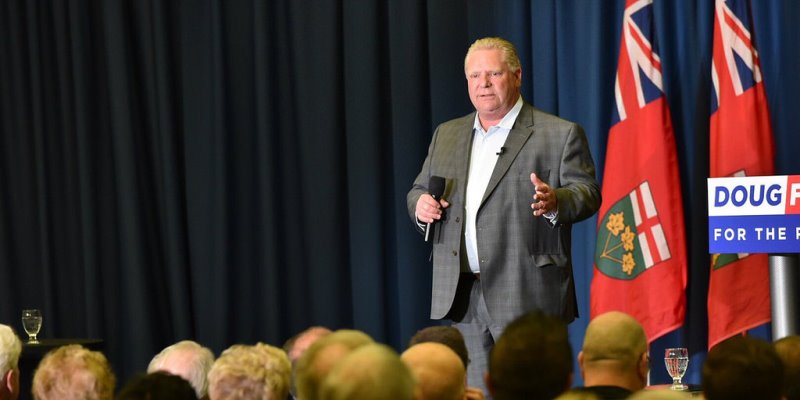Ontario has a $15 billion deficit—not the $6.7 billion claimed by the previous government

The Ontario government’s review of provincial finances is finally out, and the picture is even grimmer than what the auditor general and the Financial Accountability Office have presented.
The key findings confirm that Ontario since 1990-91 has run deficits 20 out of 27 years with net debt growing by $263.2 billion and the net debt-to-GDP ratio rising from 13.4 to 38 per cent.
But the real contribution (and headline-grabber) is the revised estimate of the province’s 2018-19 budget, which sees revenues fall from $152.5 billion to $150.9 billion while total expenditures, including the reserve, rise from $159.2 billion to $165.9 billion, making for a $15 billion deficit—not the $6.7 billion deficit claimed by the previous government.
The revised revenue outlook accounts for a more uncertain and slowing economy as the housing market cools and the impacts on growth of the minimum wage increase and U.S. tax reform are revised. Crucially, however, the revised outlook excludes the impact of ongoing NAFTA negotiations and current tariff and retaliatory trade measures that will affect Ontario disproportionately relative to the rest of Canada.
As for the expense outlook, the Ford government provisionally adopts the auditor general’s accounting treatment of pension expenses, raising spending by $2.7 billion. It also adopts the AG’s accounting treatment of the electricity sector’s Global Adjustment refinancing, adding another $2.4 billion, and reverses the yearend savings and program review savings targets, adding another $1.4 billion. Altogether, this adds another $6.4 billion in projected expenses for 2018-19.
Of course, a $1.6 billion revenue drop plus $6.4 billion in spending plus a $1 billion reserve still do not make for a $15 billion deficit, but the previous government’s $5.7 billion in increased program expenses are retained in the spending estimate, making for a $14.7 billion—or rounding up—a $15 billion deficit. On future deficit-reduction, given that this $5.7 billion has yet to be spent, there should be a rapid fall in the projected deficit once the province’s fall economic statement comes out.
On the deficit and debt, the government outlines a number of broad recommendations, which will be fleshed out in weeks to come. Most of them make sense—ensuring transparency for the taxpayer, revising the accounting standards and adopting the AG’s treatment of pension assets and the Fair Hydro Plan, and generally restoring the relationship with the auditor general. We can also look forward to a fiscal plan with deficit targets and a target and timeline to reduce the province’s ratio of net debt-to-GDP.
Yet, there are two things missing from this report.
First, as the process moves forward, will recently past years also be revised to reflect the new accounting rules? This has implications for the size of past deficits and what the province’s net debt and net debt-to-GDP ratio may be.
Second and more importantly, the report says nothing about how the government has been treating capital spending. While operating deficits have been a source of Ontario’s growing public debt, another factor is current government accounting practices whereby new borrowing for capital spending is added to the debt independently of program spending. Ontario, and other provinces, use “capital budgeting” techniques, whereby infrastructure expenditures are not charged against the operating budget with only capital depreciation or the user cost of capital treated as an expense. The result is an understatement of the fiscal effects of public borrowing on operating budgets.
This last omission is somewhat disappointing. While one understands the need for governments to borrow to finance needed long-term infrastructure renewal, it’s important for governments to fully account for the cost of doing so.
The Ford government should account for more than a depreciation charge when calculating the deficit and also make provisions for paying back the borrowed capital project principal. This can be done with a sinking fund approach. Briefly, whenever the government issues new debt to fund capital projects, the commitment should also be made to make payments on the principal over a 20- to 30-year period, with those payments recorded as part of operating expenditure.
One hopes this will indeed be part of the fiscal plan designed to reduce the Ontario’s net debt-to-GDP ratio.
Author:
Subscribe to the Fraser Institute
Get the latest news from the Fraser Institute on the latest research studies, news and events.

